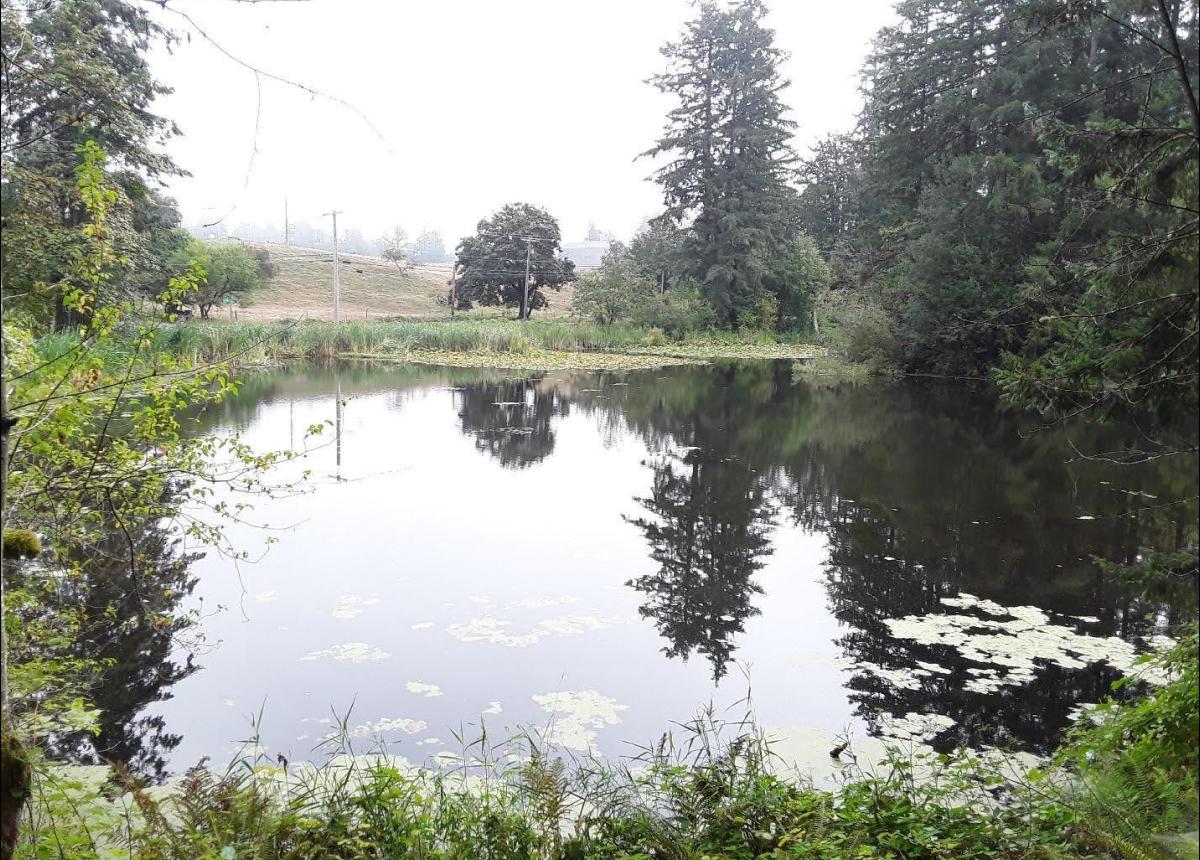A Journey Through Time and Nature: Crafting the Lagesson Homestead Forest Stewardship Plan
Tue, November 19, 2024

Picture 1. Lagesson Homestead, ca. 1912 Photo by & Courtesy Maple Valley Historical Society
Introduction
Every piece of land has a story, and the Lagesson Homestead is no exception. Nestled in the picturesque Maple Valley, Washington, the Lagesson Homestead spans 81.1 acres of rich history and vibrant ecosystems, 45.2 acres of which is covered in beautiful forests. This property is comprised of two separate parcels, with a portion of the northern parcel being a King County Historical Landmark dating back to 1885. The property has been in the family since its possession and is currently being preserved by its current owners—six great-grandchildren and two great-great-grandchildren of the original homesteaders. To them, preserving this land is not merely about safeguarding its beauty; it's about honoring the legacy of the homestead and ensuring that future generations can experience the same connection to nature and history. As devoted stewards of this remarkable property, they sought to create a Forest Stewardship Plan that reflects their vision for sustainable land management. In this post, we’ll delve into the steps taken to create this plan and highlight the unique characteristics that make the Lagesson Homestead a treasured part of the Maple Valley community.
Steps Taken to Create the Forest Stewardship Plan
The creation of the Forest Stewardship Plan for the Lagesson Homestead was characterized by collaboration and meticulous planning. By actively engaging the landowners and leveraging our ecological expertise, each phase was tailored to embody the family’s dedication to land preservation while meeting the distinct needs of the property. Below are the key steps taken in developing this essential plan.
1. Initial Consultation: The project began in Summer 2024 when the landowners contacted Resilient Forestry to create a plan compliant with state and county forest management regulations. A virtual meeting held on August 23 allowed for an in-depth discussion about the property’s history, ownership, and the landowners' management goals. This collaborative conversation laid the groundwork for a tailored stewardship approach that reflects both the family's vision and the ecological needs of the land.
2. Field Assessment: On September 4, 2024, a thorough field assessment was conducted to gain a deeper understanding of the land's current condition. This involved installing inventory plots, surveying water resources, and identifying any management issues. A total of ten variable radius plots were established to evaluate the existing forest health, allowing us to evaluate the existing health of the forest, assess tree species diversity, and gather data crucial for developing effective management strategies..
3. Data Collection: During this phase, we conducted comprehensive surveys to gather vital information about the forest's composition. The inventory included detailed surveys of tree species, diameters, heights, and overall conditions. Understory species were also identified, and coarse wood loadings were estimated. Observations regarding wildlife, rare species, and overall forest health were documented.
4. Analysis and Recommendations: Based on the collected data, Project Manager, Taylor Richmond, evaluated the current health of the forest and potential management strategies. Recommendations focused on promoting biodiversity, controlling invasive species, and ensuring the resilience of the forest against climate influences.
5. Drafting the Plan: The Forest Stewardship Plan was drafted, summarizing findings, management objectives, and the unique features of the property. After incorporating feedback from the landowners, the final version was prepared.
Unique Characteristics of the Lagesson Homestead
Understanding the unique characteristics of a property is essential for effective stewardship. The Lagesson Homestead offers a remarkable array of features that exemplify both historical value and ecological richness. Here are some of the standout aspects that define this extraordinary property.
• Historical Significance: The property is a living testament to the region's history, featuring several historical structures including the original homestead, a blacksmith shop, and a smokehouse. These buildings not only enhance the aesthetic value of the property but also serve as reminders of the area’s agricultural past.
• Diverse Forest Ecosystems: The Lagesson Homestead is home to three distinct forest stands, each teeming with a variety of tree species, including Douglas-fir, western redcedar, and bigleaf maple. These stands vary in age and composition, providing habitats for various wildlife species and contributing to the overall biodiversity of the region.
• Water Resources: Two freshwater ponds and several wetland areas on the property support aquatic life and provide vital resources for surrounding ecosystems. The property’s water features are classified as priority habitats, enhancing its ecological value.

Picture 2. Pond in the northeastern corner of property
• Wildlife Habitat: The rich understory vegetation and diverse canopy create habitats for various species, including deer, elk, and numerous bird species. The landowners have expressed a commitment to maintaining and enhancing these habitats, promoting ecological balance.
• Invasive Species Management: Acknowledging the threat posed by invasive species such as Himalayan blackberry and English holly, the plan includes specific management strategies to control these species. This proactive approach is crucial for maintaining the health of native flora and overall forest resilience.
• Long-Term Vision: The landowners are dedicated to maintaining the property’s beauty and ecological integrity for future generations. Their stewardship goals focus on creating a sustainable forest, improving wildlife habitats, and fostering a healthy ecosystem.
Conclusion
The Lagesson Homestead Forest Stewardship Plan represents a unique and comprehensive effort to blend history with ecological sustainability. The thorough steps taken in its development ensure that this beautiful property will continue to thrive as a vibrant natural landscape. As the landowners embark on this stewardship journey, they exemplify the commitment to preserving both the heritage and the ecology of this unique parcel of land. Through careful management and a deep respect for nature, the Lagesson Homestead will remain a cherished legacy for generations to come.
This stewardship initiative not only underscores the importance of caring for one’s land but also serves as an inspiration for others. By sharing insights and fostering collaboration, we can encourage more families, individuals, and organizations to embrace similar conservation efforts, creating a network of stewards committed to the thoughtful management of our natural resources. Together, we can build a future where both the stories of our past and the health of our ecosystems continue to flourish.
